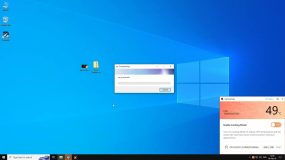
Overview
The Generic PnP Monitor driver is the driver that allows your Operating System to detect and configure any connected monitor. It will automatically detect display devices to offer a seamless setup experience, complete with basic functionalities, sans specialized drivers from the maker of the monitor.
Usage:
The Generic PnP Monitor Driver is the default driver in Windows. It allows the operating system to detect the monitor, manage resolutions, and handle basic display setup.
This driver makes sure that the core essentials are there, which can be very helpful in connecting normal monitors and getting instant display functionality.
For advanced display settings like color calibration or higher resolutions, it’s usually best to install the manufacturer’s driver.
Summary Table
| Feature | Details |
|---|---|
| Device | Monitors (Plug and Play compatible) |
| Primary Use | Basic monitor detection and configuration |
| Operating Systems | Windows 7, Windows 8, Windows 10, Windows 11 |
| Recommended Users | Users with standard monitors; general-purpose |
| You can find a more detailed description of Generic PnP Monitor in our library. |
Read also about other popular Drivers:
Corsair Virtual Keyboard Drivers
Dell Technologies DBUtilDrv2 Device Driver
FAQs
Does the Generic PnP Monitor driver support multi-monitor?
Yes, it does support multi-monitor, provided the monitors are Plug and Play compatible.
What is the Generic PnP Monitor driver used for?
It allows for the immediate detection of monitors via Windows, automatically setting the most basic settings.
Do I have to install a special driver for my monitor?
For most users, it’s sufficient to have the Generic PnP Monitor driver. You would need to get a driver from your monitor’s manufacturer if you want more advanced features.
Why is my monitor identified as “Generic PnP Monitor” in Windows?
Due to the fact that Windows labels any connected monitor without a specialized driver like this.
How do I update the Generic PnP Monitor driver?
This is a driver that gets updated through Windows Update automatically. You can also use Device Manager to search for an updated version.





